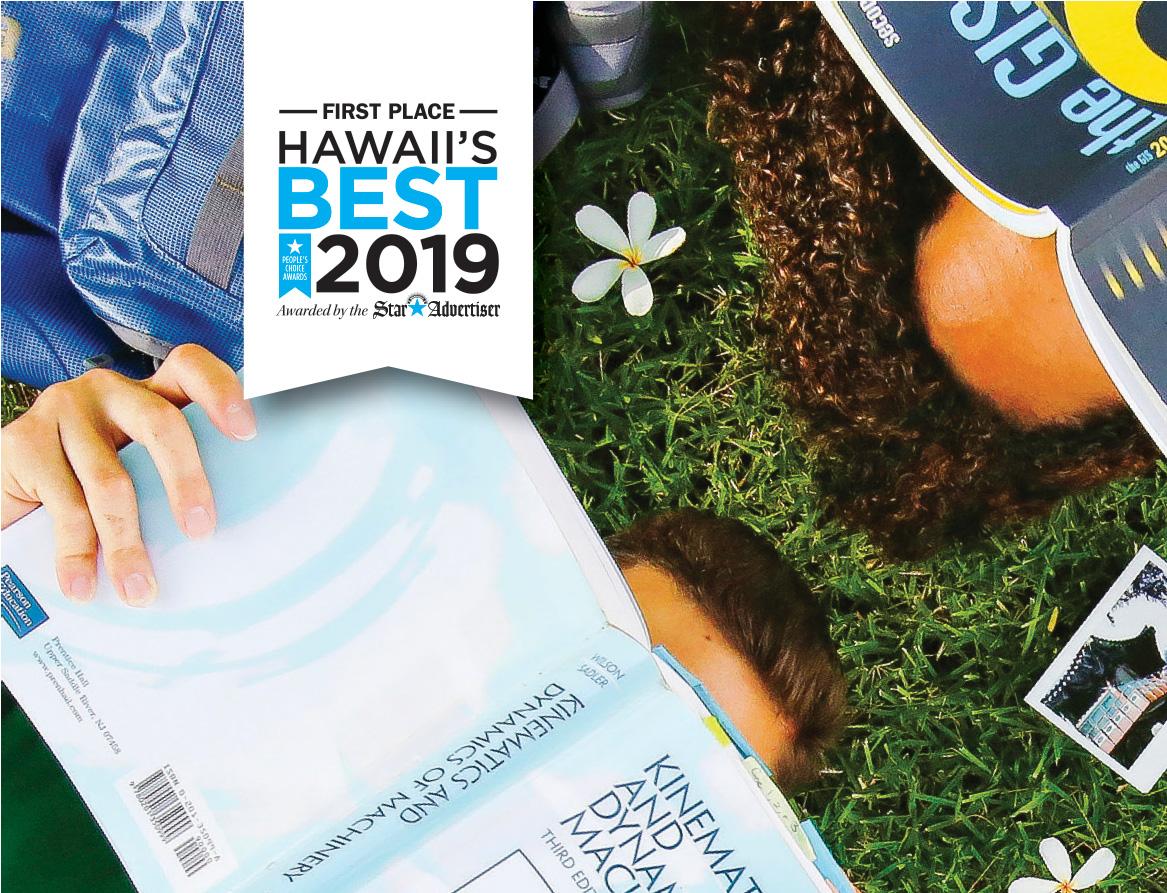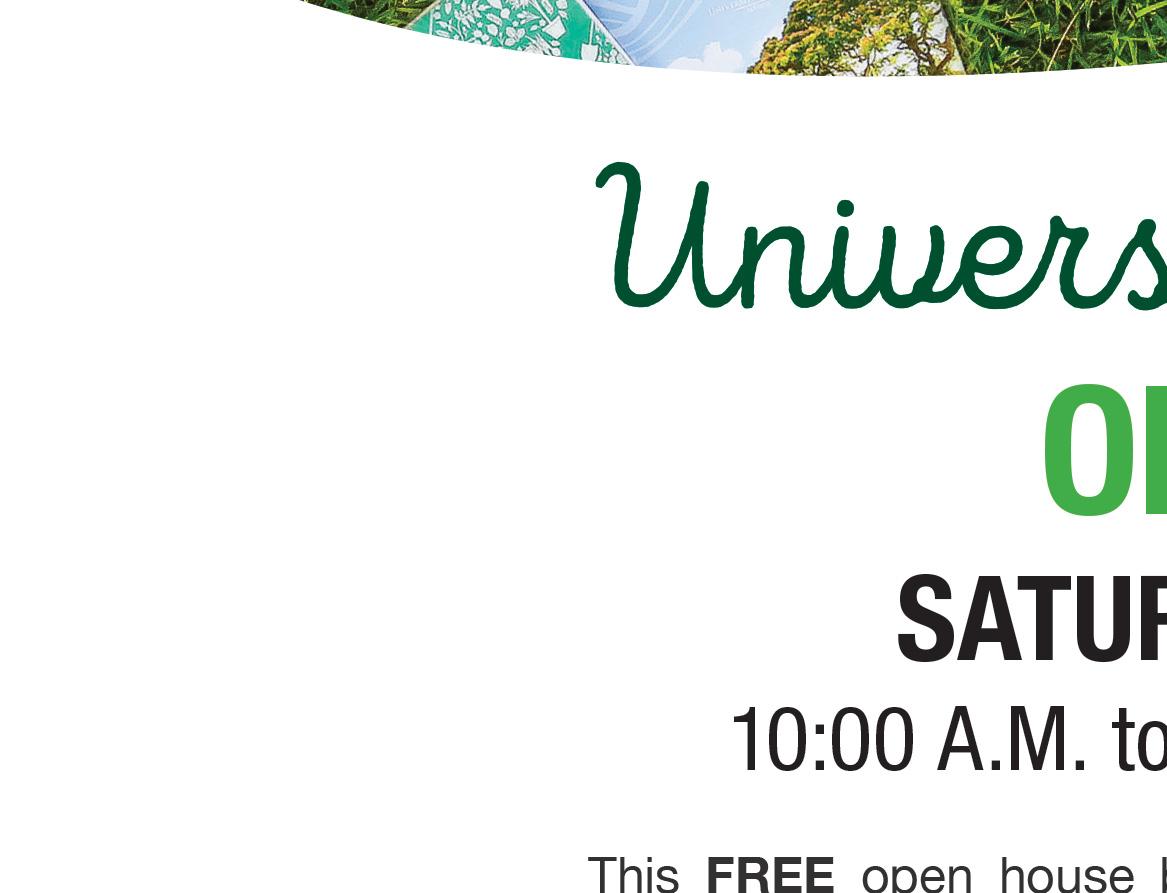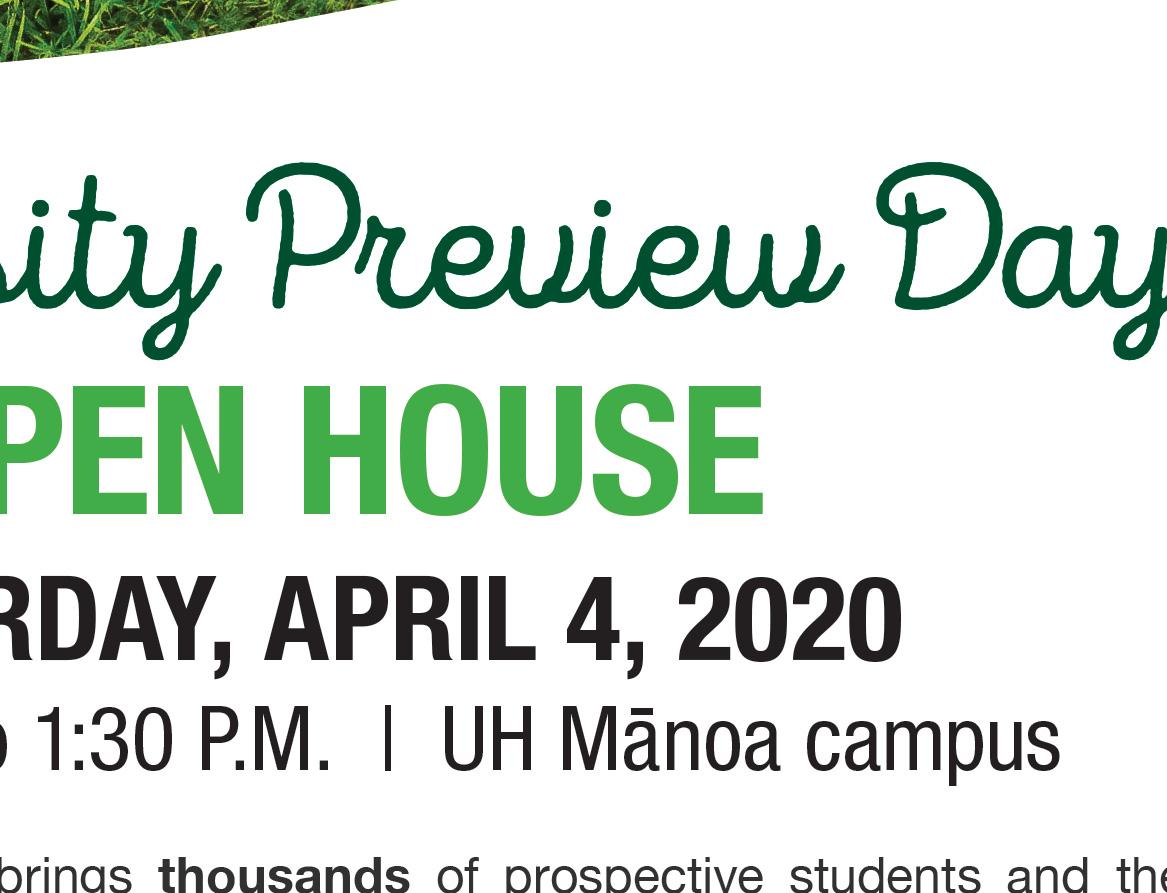
39 minute read
13
from January 28, 2020
H1 S T U D E N T HOUSING EXPRESS 1
H2 S T U D E N T HOUSING EXPRESS 2
Advertisement
F1 M - ANOA/ FACULTY EXPRESS
P1 PARKING EXPRESS
M1 M - O‘ILI‘ILI EXPRESS
W1 WAI‘ALAE AVENUE EXPRESS
HALE NOELANI
BURNS HALL
JEFFERSON HALL
HAWAIIAN STUDIES
HALE WAINANI
HALE NOELANI
BURNS HALL
JEFFERSON HALL
FACULTY HOUSING
ASTRONOMY 1
ASTRONOMY 2 ST. JOHN
PARADISE PALMS
KENNEDY THEATRE
DOLE/GATEWAY HALL
ST. JOHN
VARNEY CIRCLE
PARADISE PALMS
KENNEDY THEATRE
DOLE/GATEWAY HALL
SHIDLER COLLEGE OF BUSINESS (MAKAI)
VARNEY CIRCLE
SHIDLER COLLEGE OF BUSINESS (MAUKA)
ZONE 20 PARKING STRUCTURE (ENTRANCE BY CHING FIELD)
HAWAIIAN STUDIES ST. JOHN
VARNEY CIRCLE HAWAIIAN STUDIES
HALE WAINANI
HAWAIIAN STUDIES
FREAR HALL
HALE WAINANI
MANOA RD/KAONAWAI PL
MANOA RD/LOWERY AVE
FACULTY HOUSING 9 A.M. - 11 A.M. ROUTE STARTS AT VARNEY CIRCLE 15 MINUTE ROUTE LAST SHUTTLE LEAVES VARNEY CIRCLE AT 10:50 A.M.
VARNEY CIRCLE
METCALF ST/WILDER ST (7-ELEVEN)
WILDER ST/ALEXANDER ST WILDER ST/MAKIKI ST (MAKIKI PARK)
S KING ST/KAHEKA ST
S KING ST/HAUOLI ST
KOKO HEAD AVE
WAI’ALAE/9TH AVE
WAI’ALAE/PALOLO AVE
WAI’ALAE/ST. LOUIS DR
ST. LOUIS DR. (NEAR CITY MILL)
WA’AHILA/DOLE
HALE WAINANI
VARNEY CIRCLE BURNS HALL
ST. JOHN
VARNEY CIRCLE
PARADISE PALMS
KENNEDY THEATRE
DOLE/GATEWAY HOUSE
BERETANIA ST/ KAIALIU ST (LONGS DRUGS)
SINCLAIR CIRCLE S KING ST/MAKAHIKI WAY
PUCK’S ALLEY 6:30 A.M. - 6 P.M. ROUTE STARTS AT VARNEY CIRCLE 35 MINUTE ROUTE LAST SHUTTLE LEAVES VARNEY CIRCLE AT 5:45 P.M.
ON BRIDGE NEAR RESTAURANT
WAI’ALAE/4TH AVE
WAI’ALAE/10TH AVE
KOKO HEAD AVE
VARNEY CIRCLE
HALE WAINANI 6:30 A.M. - 6 P.M. ROUTE STARTS AT KOKO HEAD 30 MINUTE ROUTE SHUTTLE BREAK 12:30 P.M. - 2:30 P.M. LAST SHUTTLE LEAVES VARNEY CIRCLE AT 5:45 P.M.
Willy Kauai’s global fight for Native Hawaiian recognition
NATHAN BEK STAFF WRITER
When Willy Kauai took the position as the second ever director of the Native Hawaiian Student Services fi ve years ago, his mission was clear: “Opening this university up for Hawaiian students.” One area he found lacking Native Hawaiian representation was the study abroad program. In response, he helped launch a program that took a cohort of primarily Native Hawaiian students to Europe, but he did it the old-fashioned way.
The program was based on the Education of Hawaiian Youths Abroad program, which King Kalakaua created in 1880. The orig
COURTESY OF JAY-R ABALOS The Queen Liliuokalani memorial is set to open on Queen Liliuokalani’s birthday, September 2nd.
inal program brought 17 men and one woman to six different countries in Europe to become the “future leaders” of Hawai‘i.
“What we’re doing today in higher education is very similar to what our ancestors were doing,” he said.
Since 2018, the Hawaiian Youths Abroad has returned to three of those original countries — Italy, France and England — to chronicle the impacts these students made abroad.
“There’s a large footprint of Hawaiians traveling throughout Europe,” Kauai said.
Tracing these footprints led them to museums, national archives and repositories. One story they found was of Matthew Makalua, the fi rst ever doctor of Hawaiian decent to get a western training and who never claimed American citizenship because the overthrow happened while he was abroad. They even discovered embassies where diplomats of the Hawaiian Kingdom once held a seat.
But at home, Kauai felt like the campus itself has very little evidence of the impacts Native Hawaiians had on the university. “There’s very few places in which you have

A new hale for the Native Hawaiian Student Services
COURTESY OF JAY-R ABALOS “This has now become a one stop shop,” Kauai said. You just need to take off your shoes.
NATHAN BEK STAFF WRITER
The Native Hawaiian Student Services now lives in a newly renovated space in QLCSS 113. The new location is fully equipped with computers, smartboards, co-working spaces, a lounge and counseling centers.
“There is a consolidation of services you’ll get from stopping by here,” Willy Kauai, director of the Native Hawaiian Student Services, said.
The NHSS provides a variety of services for anyone who decides to walk in. There are counselors ready to help you with your career and wellness, along with personalized scholarship and fi nancial aid assistance. Other services include regular workshops designed to teach Hawaiian leadership and innovation, tutoring in Math, English and ‘Ōlelo Hawai‘i, and even a study
COURTESY OF JAY-R ABALOS Armed with a Shaka, Willy Kauai is discovering Hawaiian history around the world and creating it back home.

Hawaiian identity refl ected in the physical space,” he said.
He noticed that almost every building on campus that features a Hawaiian name is either a place where you eat or sleep — referring to the dorms and dining halls — but very few places where you learn.
His next mission is to change that. Kauai’s fi rst project is already underway; to renovate a pavilion in the QLC to feature a memorial to Queen Liliuokalani. The project is set to feature a plaque that provides a history of who she was and what she stood for.
Kauai is also lobbying to name the new Life Sciences Building after a Native Hawaiian who has made their name on the campus.
Isabella Abbott, one of his leading candidates for the name, was a pioneer in marine botany and o f Hawaiian descent. She created the undergraduate major of ethnobotany at UH and authored “Marine Algae of California,” winning the highest award in marine botany and becoming the fi rst minority to teach at Stanford.
“There’s a prospective Hawaiian student out there that could see themselves in a professor like Abbot,” he said.
abroad program that explores Hawaiian history around the world. “We look into disparities with regards to services provided to Native Hawaiian Students,” Kauai said. “We try to transform the institution and its service to Native Hawaiians.”
Willy Kauai is the second ever director of the NHSS. He has held his position for fi ve years. Before taking this position, Kauai was a doctoral student in political science at UH Manoa before becoming a professor. Now, he is using his administrative position to help Native Hawaiian students and faculty.
Kauai believes that a major concern going forward is the declining representation of Native Hawaiians at the university, but he remains hopeful that the NHSS will help change that with its new services, funding and hale. The NHSS fi rst opened its doors in 2008 and typically gives preference to students of Native Hawaiian descent or with interest in Hawaiian studies.
NATIVE HAWAIIAN STUDENT SERVICES OFFICE
LOCATION QLCSS 113
HOURS Monday - Friday 9 a.m. - 4 p.m.
CONTACT (808) 956-4288
SERVICES -Student scholar spaces
-Counseling and referrals for all majors
-Tutoring
-Workshops

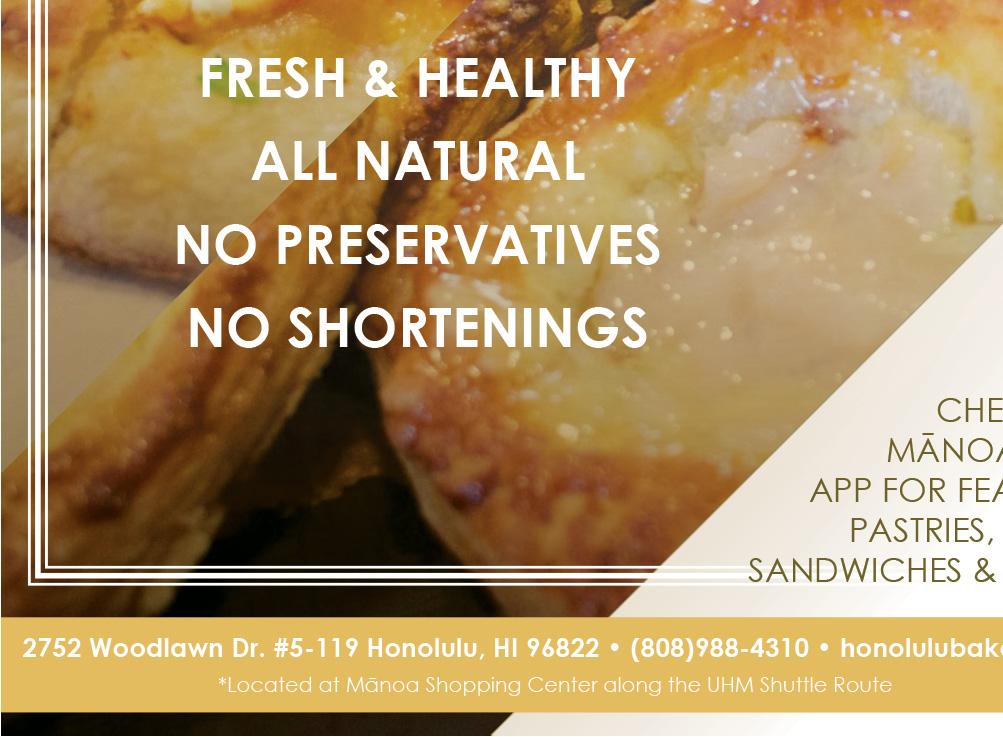




RIO Highlight: The Healing Earth Initiative
T h e H e a l i n g E a r t h I n i t i a t i v e
A gathering place for student stewards and collective healing
FOOD WASTE
KAILANIANNA ABLOG CO-MANAGING EDITOR
With plastic pollution and climate change becoming prominent issues, the need to protect the earth continues to grow. Called to plant seeds of healing, students at the University of Hawai‘i at Mānoa came together to form “The Healing Earth Initiative,” a Registered Independent Organization that seeks to heal and cultivate connections between humans and Mother Earth through sustainable and environmental campaigns. The RIO works with various organizations on campus, including the Student Sustainability Coalition, a group of organizations that focus on sustainability and the Surfrider Foundation chapter at UHM.
HEALING HANDS Sophomore Ashley Ostendorf is the president of the initiative and pursuing a Bachelor of Science in Global Environmental Science. According to Ostendorf, the inspiration to establish the RIO came from a need to increase sustainability practices on campus. “When I fi rst came here, I noticed a need for more meaningful connections between people, a more conscious awareness of environmentalism, a need for a general awareness of sustainability on campus,” Ostendorf said. “Our society really nurtures individualized mentalities and is isolative. This isolation is inherently cutting off our connection to our planet and others. We’re all part of this ecosystem that’s become out of balance, so our collective - our initiative - is ultimately trying to help people come together to our sense of belonging to our planet and our responsibility to Mother Earth.”
Although Ostendorf established the RIO, she says it was thanks to like-minded souls that helped the initiative fi nd its roots. One of these souls is Shannon Murphy, a sophomore at UHM and Ostendorf’s close friend. In an email interview, Murphy explained her reasoning behind joining The Healing Earth Initiative.
“I learned about this RIO through my great friend Ashley. She told me about starting up her own club on campus to focus on widespread environmental issues. She was extremely motivated to get some things rolling on campus and I knew I wanted to join in on the team!”
The RIO also places an emphasis on being a safe space for students to
COURTESY OF REBECCA TANG The Healing Earth Initiative hopes to use the above logo for their composting stations.
share and see their ideas manifest. “This space is open for everyone and any idea, motivation - anything that people are motivated to share are welcome,” Ostendorf said. “We are looking to foster a sense of individual and collective empowerment. It’s meant to breathe life into every idea.” Murphy adds, “This club offers a safe environment to share our thoughts/ideas/goals and allows us to inspire each other through our individual projects.”
OVERSEEING THE CROPS The Healing Earth Initiative is a new RIO, so many of their projects are still in their planning stages. One of the fi rst projects the initiative is working on is creating composting stations at Paradise Palms and Ba-Le.
“Since this is a fairly new RIO, not many projects have been started and are in place yet but we have many ideas bouncing off each other. Composting is one of the main projects I am interested in and would gladly be part of,” Murphy said. “It will bring together the farming community, expand our knowledge on where our food comes from and where it will go after we are fi nished with a meal. Having food return to the earth to help nourish our bodies once more is a really powerful thing, and I’m excited to see that implemented on this campus.”
Ostendorf adds that they also hope to create community gardens and host environmental outreach to increase awareness and sustainability education.
“We also are looking at doing community gardens, somehow getting a hold of property and starting community-supported agriculture projects as a way of combating homelessness and food insecurity,” Ostendorf said. “Also, bringing in our friends at the Hawaii Food Bank and doing educational outreach programs, teaching people how to live sustainably, grow their own food, and gain a sense of awareness.”
Ostendorf also mentioned they are also open to collaborating with other RIOs.
TAKING UP THE SHOVEL When asked what makes The Healing Earth Initiative different from other RIOs, Ostendorf says their focus on healing is thei r guiding light.
“We recognize that what we’re doing is not only for us. It’s fo r the collective and something that, if done correctly, can set a reall y good example for a lot of other people and campuses - a recognition that when people come together with a shared goal and a connection to earth, that a lot o f good can happen. A lot of people can see the world and engage in it differently,” Ostendorf said.
Students who are interested are invited to join the RIO and can do so by emailing Ostendorf at ashleyno@hawaii.edu.
Murphy is excited for the RIO’s future projects and hopes others are open to working with them.
“We are extremely open to seeing new faces and anyone can join in at any time. I believe we are al l stewards of this planet, and we all need to work together to heal this planet and make it sustainable once more for future generations,” Murphy said.
A Look Inside UH M¯noa’s Study Abroad ProgramsA Look Inside UH M¯anoa’s Study Abroad Programs And the adventure begins… Abroad!





KAILANIANNA ABLOG / KA LEO O HAWAI‘I UH offers programs that give students the opportunity to travel the globe.
KAYLEE FRAZEE INTERN Do you love traveling? Have you been itching to immerse yourself in a new culture or language? The University of Hawai‘i at Mānoa’s study abroad programs might be your perfect fi t. UH Mānoa has different options for students who wish to study outside of UHM without having to transfer schools. Options include traveling to a different country with the UHM Study Abroad Center (UHMSAC), exchanging to a school on the mainland (NSE) or becoming an international student with the Mānoa International Exchange program (MIX). UHM STUDY ABROAD CENTER (UHMSAC) The study abroad center has programs in 22 different locations in Europe, Asia and Australia. Students have the option to stay with a local family (homestay) or in the dorms offered by the home campuses depending on the location. Programs are sorted both by major and location, for those students who are interested in receiving major-specifi c credits while abroad. If you are a student majoring in creative media, the most applicable destinations are Florence, Italy and London, England. For those who are interested in immersing themselves in foreign language, this program would be ideal, as there are dozens of language-focused classes to choose from. For example, those desiring to expand their knowledge of the French language can choose to study for a semester in Paris. However, students have the option to apply wherever they wish, despite their specifi c areas of study. Instead of paying UH tuition, students pay a different, individual study abroad tuition fee. The cost varies by location, housing type and program duration, but averages at around $15,000 a semester. Financial aid and scholarships are available.
NATIONAL STUDENT EXCHANGE (NSE) The National Student Exchange offers programs in 170 locations, including U.S. territories and some provinces in Canada. Any school that participates in the NSE program can allow their students to apply to “exchange” their own university for a new one. Those studying at UH can apply to participate and have the choice to transfer temporarily to any of the listed locations for a semester or a school year.
Rayna Tagalicod, the director of UH Mānoa’s NSE program, said her favorite part of the NSE program is that it gives students the opportunity to have life-changing experiences. “From exploring a new area, living in a place different from home, experiencing life on a different campus, enrolling in different courses, and learning about themselves, students learn and grow academically and personally,” Tagalicod said. “Almost all are grateful for the experience and do not regret going on exchange.” Tagalicod also elaborated that each school has a different tuition rate. Students have the option to pay a “home” rate, where they pay their regular UH tuition fees while on exchange, or they can pay a “host” rate, where they pay whatever tuition the exchange school requests. Students can use fi nancial aid to help with the program payments.
MĀNOA INTERNATIONAL EXCHANGE (MIX) The Mānoa International Exchange (MIX) program allows students to immerse themselves in cultures unlike that of Hawai‘i’s. MIX includes schools in 25 different countries and offers spring, summer and fall semesters. The main difference is in the application process. Those wishing to participate in the Mānoa International Exchange can do so by applying online on the MIX website. Applicants must submit a list of their top fi ve destinations, and the program coordinators nominate the location they feel would be the most adequate for that student. After bein g nominated, applicants must then apply individually to their chosen campus. From there, they would have to apply to as an exchange student and submit any application materials requested by tha t specifi c school. Another important difference between MIX and the other stud y abroad programs is that any credits earned as an international studen t are counted as transfer credits. This means that any grades you ge t while participating in the Mānoa International Exchange program do not count toward your UHM grade point average. Instead, they are compiled on a transfer report.
Students enrolled in the MIX program pay their regular UHM tuition price, regardless of their location. The Mānoa International Exchange program also accepts fi nancial aid and has several scholarship opportunities.
Putting ‘community’ in ‘commuter’ Finding a community on a commuter campus can be hard, but it is essential.
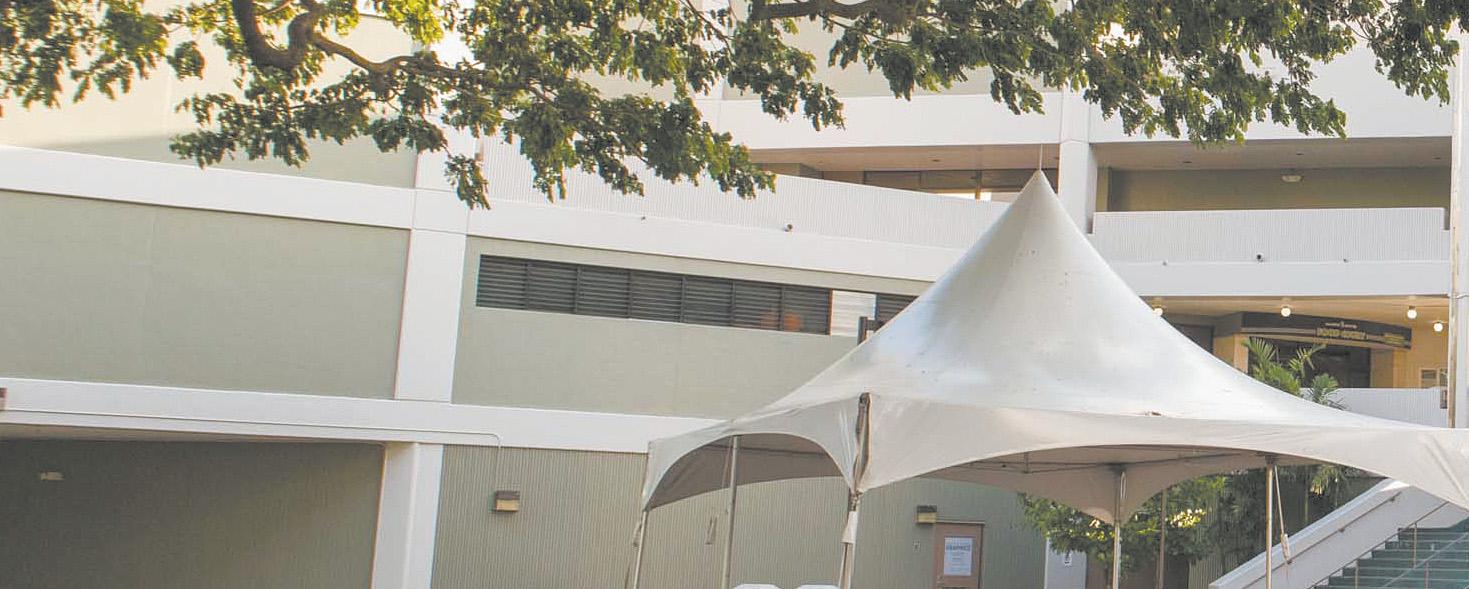

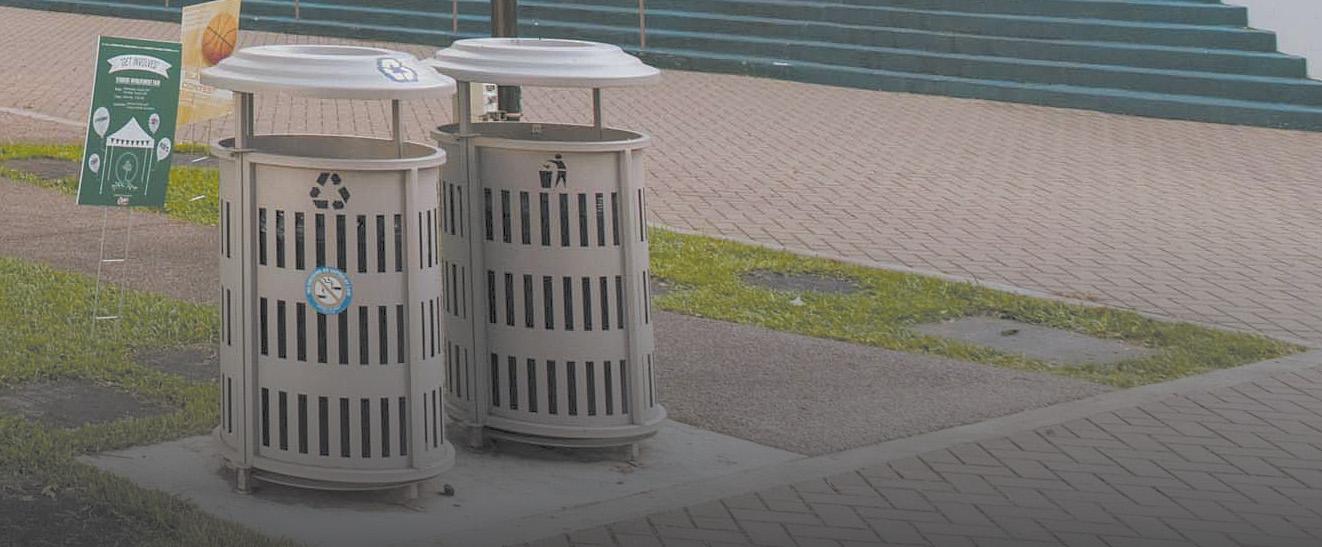





ESTHER KIM STAFF WRITER
Being raised in O‘ahu and graduating from Mid-Pacifi c Institute, an approximate ten-minute walk from the University of Hawai‘i at Mānoa campus, made my decision to attend UH Mānoa one that I have always struggled with. Was I missing out on what moving away could offer? Was I missing experiences that I could only get on the mainland? Or was I the greatest child in the world because I was saving my parents thousands of dollars on tuition?
Honolulu, being the tiny city that it is, meant that I had friends and family at my fi ngertips. I had connections to learning opportunities and could work near campus. Therefore, I had the misconception that attending UHM and transitioning to college life would be a cinch. Little did I know that my greatest struggle in my transition would be fi nding connection to others.
There are many different factors that play into my diffi culty getting settled into the new college life.
One factor was large class sizes. I went from a twenty person classroom in highschool to a two-hundred person lecture that made fi nding a seat seem daunting. Another factor was structuring my own classes and schedule.
There is freedom in creating your own schedule - two days a week of classes? Absolutely. However, the process of fi nding fi ve classes out of hundreds that are offered seemed terrifying. Luckily, we have teachers and advisers who help us make these decisions about enrollment, create our schedules, and adjust to a new curriculum.
But the biggest struggle that I did not know would exist is the loneliness that can come with being a student at a university with a majority of its attendees being commuters.
I am a commuter. Because my house is a fi fteen-minute drive
SHAFKAT ANOWAR / KA LEO O HAWAI‘I While many universities have a campus center, O‘ahu’s temperate weather allows students to enjoy sitting and socializing outside.
away, I found myself quickly packing my bag after, or even in between classes, and scurrying home. If I stayed on campus to eat lunch, it was a ten to fi fteen minute break at most before I would retreat to the library to continue studying.
Most of what keeps me around and interested in any sector of my life is connection. Connection to others like short conversations with classmates, being on a fi rst-name basis with my colleagues, and having socialization planned are what keeps me from speedily driving home to watch Netfl ix. This lack of connection did not just affect my emotions, but also took a toll on my performance in school.
Since I was not being forced to spend time with classmates for eight hours a day anymore, I no longer had study buddies or built-in after school activities. I was not alone in the “I would rather watch Netfl ix in the comfort of my home” club.
After class would end, there were few people who would converse or move their conversations to the cafeteria or campus center. As I became more isolated and lonely, reluctant to reach out to clubs or events on campus, my class attendance and interest in my studies decreased. The freedom and opportunities for more social engagement I received as an adult attending university were squandered in my fi rst two years. This led me to take a gap year. In that gap year, it was a constant conversation of, “What do I want to do?” Rather, the question that I should have been asking was, “What is missing from my educational experience that is holding me back?” I needed a reason to be on campus other than attending classes. I needed community. It was in my return to UH Mānoa that I was motivated to fi nd a reason to be on campus. This took exploring, putting myself out there, fostering many new friendships, and extending invites to people to get a drink at Ba-Le or grab lunch, but also came with many frustrations of that same loneliness that would provoke me to retreat home. I am happy to say I am on the uphill trend of feeling connected and having purpose. A few ways I have done this are making a gallant (almost overbearing) effort to talk to my classmates, exchange numbers with like-minded students, and set up my own study sessions. The largest factor that allowed me to feel purpose again was becoming a staff writer for this very newspaper you are reading right now.
I knew I was not alone in my struggle to stay connected on campus and have luckily met a couple people who have seized opportunities on campus and set an example for me to do the same. It was through talking to these students that I realized my experience at UHM would be what I made of it. The opportunities to enjoy my non-traditional college experience defi nitely existed. One student whom I had the pleasure of speaking with was Ji Won Kwak, a 2019 Finance, Management Information Systems and International Business graduate from the Shidler College of Business who was also raised and educated in O‘ahu.
She had a simple piece of advice for me: “You have to join clubs and look for opportunities.” Her college career began in Omaha, Nebraska at Creighton University for two years before transferring to UHM. She said, “Even though Creighton was in the middle of nowhere, I always felt close to my friends because we all lived in the dorms. No one really commuted and we always dined in the cafeteria. I studied a lot more because I was always on campus. It gave me a sense of belonging.” However, when she returned home, she faced similar loneliness of being at a new school, let alone a commuter campus.
“When I came back to UH, I was extremely sad and nervous because I did not have many friends. When I fi rst started, I did not know what I wanted to do and was really alone. I would only go to class, try to take online classes. I avoided people.”
It was when she found her niche in business that she found a community that would give her a reason to stick around after class. “When I decided to apply for Shidler, it was my opportunity to step out and make friends. The fi rst week of the school semester at Shidler, the courtyard had different clubs showing what kind of communities they were and what they wanted to help you with. One that stood out to me was Delta Sigma Pi. They valued professionalism, community service, scholarships and awards, and brotherhood. Brotherhood stood out to me because I needed a family feeling. It really was that.”
When Kwak joined Delta Sigma Pi, she found that not only her social opportunities rose but her career and educational opportunities too. “It was through joining Delta Sigma Pi that I had the opportunity to do case competitions for Northeastern University International Business Case Competition. With other members from my club, I was able to compete and go through hardships with them and learn. And in November 2019 we won the competition, allowing UH Manoa’s school of business to showcase their standing of excellence as an international business school.”
Through many conversations with Kwak about her experience at UHM, I felt motivated to follow suit.
While I had connected with someone who grew up in O‘ahu like me and faced similar struggles, I was interested to know what outof-state students’ thoughts were on UHM being a commuter school. Reuben Sablad is a fi rst year Kinesiology and Rehabilitation Science Major from California. When I asked him about his thoughts on the commuter effect on his experience thus far, he surprised me with a rather enthusiastic response.
Even though Sablad lives at the dormitories, he mentioned tha t many of the residents on his fl oor who are locals return home on the weekends. Instead of hibernating in his dorm, he has found a club called “E-Sports” on campus tha t has provided him with community. “E-Sports is a competitive video gaming club where we have different divisions. UHM is a part of the Mountain West Division and we play other colleges on the mainland,” Sablad said.
According to Sablad, meeting often for the club created ways for him to make friends.
“We meet four times a week and at fi rst I did not think I would hang out with anyone from the club outside of our meetings but I ended up making good friends who I eat and go to the gym with.”
When I asked him what advice he would give to someone struggling with fi nding a community, he said, “Look at fl yers around campus for events. You do not even realize how many things are offered. I saw E-Sports through a fl yer at my dorm. Follow social media and keep your eyes open for opportunities.”
I hate to say it but it is true. If I do not have a reason to be on campus, I will fi nd a reason not to be. This is not only true for university, but my future endeavors. I am a fi rm believer that loneliness or hard seasons weigh less when we have others to share it with and endure through it. When loneliness and such seasons come to an end, wha t remains is community. What do you think? Let us know @KaLeoOHawaii

KAILANIANNA ABLOG CO-MANAGING EDITOR
Former JROTC cadets, enlisted soldiers and those who are interested in learning more about or establishing a career in the military can fi nd their stations with the University of Hawai‘i at Mānoa Army Reserve Offi - cer Training Corps program.
Founded in 1914, the UH Mānoa Army ROTC program “recruits, trains and develops leaders of character to serve the Nation as Commissioned Offi cers in the U.S. Army; additionally, motivates young people to be better citizens committed to life-long service to the community,” according to its offi cial Facebook page. Stated on the program’s offi cial website, cadets “have gone on to serve with distinction in the United States Government, Hawaii State Government, and the United States Army.”
MEETING IN FORMATION According to the UHM Army ROTC website, military instruction began during World War 1, when the War Department authorized a Student Army Training Corps. In the fall of 1919, students formed an infantry company with hopes to qualify “for the newly instituted National ROTC program.” Due to not meeting the 100-man strength requirement, the group was not authorized until October 1921. In 1924, the men who completed four years of ROTC training were commissioned into the United States Army Reserve. The UHM ROTC program also played a pivotal role in World War 2, as “UH was the only senior ROTC unit in the US and its territories to be called to active duty and serve.”
Over the years, changes meant to improve the quality of the program were made. For example, in 1965, the ROTC program began to be offered on a voluntary basis. Moreover, the Revitalization Act of 1964 allowed students who could not enroll as freshman to join as juniors. Students from Chaminade University were able to join the UHM ROTC program, an option that was later extended to BrighamYoung University-Hawaii students in 1971.
Cultivating future officers and better citizens

EDUCATION AND RUCK MARCHES As stated on their offi cial website, the program “provides full-time college students the opportunity to pursue a commission in the U.S. Army, U.S. Army Reserve, or the Hawai’i Army National Guard.” Fouryear, three-year and two-year programs are available.
Enrolling in these programs does not automatically mean you will be in the military. Freshman and sophomores are able to take courses without obligation of service to the military. Juniors are required to contract into the Army.
The four-year program is broken into two parts: two years of the basic course and two years of the advanced course. The basic course, tailored toward those who enroll in ROTC as freshman, consists of electives. Sophomores who decide to join may do so with approval and complete a compressed version of basic course classes. The basic course allows cadets to experience a “moderately paced course of military and academic training.” Completion of the ROTC program will make them eligible for a commission once they graduate.
The advanced course requires cadets to attend a month-long summer camp at Fort Knox in Kentucky. To be eligible for the advanced course, a student must be a U.S. citizen or U.S. national, have completed the basic course or an equivalent, and meet other “statutory and regulatory requirements.” Cadets in this course are paid $450 to $500 per month during the academic year, and are given $900 and free room and board while at camp. Students can enroll in the two-year advanced course without taking the basic course by completing a four-week summer camp, also at Fort Knox. They receive about $600.
Additionally, veterans, three-year JROTC graduates, national guardsmen and reserves may be exempt from taking the basic course.
Enlisted soldiers can also join through the “Green to Gold” program, which, according to goarmy.com, allows them to pursue “a baccalaureate or graduate degree and earning a commission as an Army Offi cer.” Those who seek to become an
COURTESY OF HAWAII ARMY ROTC The Warrior Battalion’s motto, Ikaika Imua, means “go forward with strength.”
offi cer in the Army Reserves or the Hawai’i National Guard can participate and receive drill pay as a trainee while completing the Army ROTC advanced course. This includes monthly ROTC spending allowances and any GI Bill educational benefi ts they are allowed. Scholarships offered by the Army ROTC program are merit-based and cover full tuition and fees for any university on the island. According to their offi cial website, “scholarships provide $1,200 per year for books and an additional $300-$500 per month spending allowance.” High school seniors can apply for four-year scholarships by Jan. 10, while two- and three-year scholarships can be applied for once a cadet is in the ROTC program.
BEING A WARRIOR BATTALION CADET Cadets in the ROTC program balance schoolwork and training in leadership and soldiering. Activities include physical training three times a week, which is used to prepare them for the Army Physical Fitness Test (APFT). They also partake in fi ve- to seven-mile ruck marches in full combat gear, as well as Beach PT, held in Waikiki.
Students are also able to participate in Color Guard, the Ranger Challenge, Air Assault School, Airborne School, “Push-Up Squad,” and the Cultural Understanding and Leadership Program, along with other volunteer opportunities.
Samantha Smith is in her master’s program in Human Resource Management at Hawai‘i Pacifi c University. Originally from Tennessee, she is a MSIV cadet, or a fourthyear student, in the ROTC program and enrolled through the “Green to Gold” program.
She said her decision to join came after hearing of the program’s stellar reputation among enlisted soldiers. “Rumor fl ies around fast within the Army of which universities have a good reputation and which ones don’t. The University of Hawai‘i has an outstanding reputation among graduating lieutenants for producing quality offi cers,” Smith said. Unlike Smith, junior and political science major Jin Kim found herself avoiding the program at fi rst. “I was trying to avoid coming to this program because of the background I grew up in; I didn’t have the most positive perspective on the military,” Kim said. “But my mom kept pushing me in high school because she knew I would match it and she knew that this was the way I needed to succeed in life.” After a change of heart and learning more about the program, Kim enrolled in ROTC courses and has plans to “continue to the end.” Senior and political science major Stephanie Rivera found herself following her older brothers’ footsteps when she came to UHM and joined the ROTC program. Since joining, she has received a scholarship and participated in a multitude of activities including Color Guard and the Ranger Challenge. Her involvement in these events, as well as volunteering, allowed Rivera to fulfi ll a dream she had since her JROTC years at Moanalua High School.
“(In highschool) I would always see people in uniform greeting us. I was very excited and nervous to see them because that was the next step I wanted to take,” Rivera said. “Being able to, within this program, go back and greet and help out those cadets in high school, it feels like full circle, like I’ve become the person I wanted to be when I was there.”
Coming from Fort Hood, Texas before joining the program, Smith notes how the program and its members cultivate a sense of ohana. “The best part is coming in and you’re friends. Everyday you have cadets who are going through the same thing as you; they’re doing college, they’re juggling jobs, a lot of us have families,” Smith said. “We’re making it; we’re coming in here and leaning on each other for support and we help each other out. The fact that you are building relationships you’re going to have throughout your entire life, entire career. You’re going to encounter these people again and again if you stay in the Army.”
For Kim, the best memory of being in the battalion is volunteering for Push-Up Squad during the football games. Through these experiences, she gained a new network of friends and the opportunity to grow and mature.
“It’s given me a lot of connections, networking and whatnot. We joke around that we’re not normal college students; there’s a lot more tha t we have to hold up on,” Kim said. “It’s good. There’s a lot of responsibilities so it makes us mature a lot faster.”
For students interested in joining the program, Smith, Rivera and Kim have some advice.
“Come out, don’t be shy. We’re normal people doing normal things, except we actually are working towards a career in service to our community and country. It’s unforgiving but very rewardable.”
“I’d say, if you’re not sure abou t it, you can take your fi rst semester off, trying to experience college life and see how hard it is, and you can always join in your spring semester. Take your time making that decision,” Rivera said. “There’s so many tuition options here that are available so it’s a great way to pay for school and they have a solid career afterward.” Kim participated in Punahou summer school’s JROTC program and felt it did not work for her. She says even if the fi rst time does no t go well, go for it again.
“If it didn’t work out the fi rs t time, do it again because it could be a different experience. Don’t jus t stop and think you can’t do it. If it’s not for you, there’s obviously something else for you to do.”
Smith also has a special message for her fellow enlisted.
“When I was doing my undergrad, I would see them (ROTC cadets) out there in the morning and I was walking the dog and they were doing PT. I was like ‘Man, tha t sucks. I am so glad that is not me.’ Then fl ash forward fi ve years and here I am doing the same thing. I f I had done it on the other side, if I would’ve done it for my undergrad, where would I have been?” Smith said. “A lot of us active duty cadets are in grad programs because a lot of us have our undergraduate. We’re like ‘Man, we missed out.’ Number one, running might have been easier. We would’ve been miles ahead of our peers right now than where we are at. Don’t have that regret.”
CHAVONNIE RAMOS | EDITOR IN CHIEF
The University of Hawai‘i Athletics program has approximately 450 student-athletes competing in 21 men’s, women’s and co-ed varsity teams. UH Athletics is a member of the Mountain West Conference, Big West Conference, Mountain Pacifi c Sports Federation, Pacifi c Coast Intercollegiate Yacht Racing Association Intramural, recreational and outdoor sports.
Here are some storylines and highlights from the past school year to help keep you in the loop.
MORE INFO
MEN’S SPORTS Baseball, Basketball, Football, Golf, Swimming & Diving, Tennis, Volleyball
CO-ED SPORTS Cheerleading, Sailing WOMEN’S SPORTS Basketball, Cross Country, Golf, Sailing, Beach Volleyball, Soccer, Softball, Swimming & Diving, Tennis, Track & Field, Volleyball, Water Polo

The Rainbow Warriors commemorated their 100th season on January 25. UH played its fi rst season in 1912, and for the fi rst three decades the ‘Bows played high schools, military and other amateur teams on island before facing their fi rst collegiate competition in the late 1930s. For the past 99 seasons, the program has won 1,136 games (839 collegiate wins) and advanced to fi ve NCAA tournaments and eight National Invitation Tournaments.
This season, UH paid tribute to the “Fabulous Five” of Al Davis, Jerome Freeman, Dwight Holiday, Bob Nash and John Penebacker were recognized at the November 29 game against San Francisco. The 1971 and 1972 ‘Bows fi nished with a 47-8 record and clinched UH’s fi rst NIT and NCAA postseason tournament berths.
On the February 15 match against UC Irvine, Nash will become UH’s fi rst-ever men’s basketball player to have his jersey retired. Nash spent 31 years with the ‘Bows, including two as a player, 26 as an assistant coach and three as a head coach.
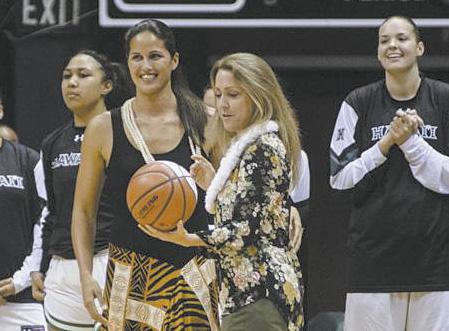
Rainbow Wahine basketball head coach Laura Beeman received a contract extension through the 2023-2024 season.
Her most recent contract was set to expire in summer 2021. Beeman has been head coach for the Rainbow Wahine since 2012, accumulating a record of 124-110 in seven-plus seasons. She led the Rainbow Wahine to one NCAA tournament appearance (2016) and four Women’s National Invitation Tournament appearances (2013-15, 2018). In her career, Beeman won one Big West Conference regular-season championship in 2015 and a conference tournament championship in 2016. Beeman was named conference coach of the year in 2015 as well. The Rainbow Wahine softball team was picked to fi nish third in the Big West Conference preseason coaches poll. UH fi nished second in the Big West last season with a 33-16 overall record and 14-7 in the conference. It was the Rainbow Wahine’s highest fi nish since they won the conference in 2012 in their fi rst year back in the Big West.
The Rainbow Wahine return 11 letterwinners and two redshirt freshmen from 2019. UH welcomes 11 new players, including eight freshmen, a sophomore and two transfers. Senior fi rst base/catcher Callee Heen leads the Rainbow Wahine heading into this season. Last year, she led the league with 15 home runs and 31 walks. Heen also led UH with a .374 batting average, 46 RBI, a .509 on-base percentage and a .789 slugging percentage. On the mound, sophomore pitcher Isabella “Izzy” Dino leads the staff of seven for this season. Dino recorded a 9-6 overall record while posting a 2.93 ERA in 107.2 innings pitched last season. She struck out 39 batters with 22 walks in 22 appearances.

The University of Hawai‘i Rainbow football has a new head coach at the helm of the program. Todd Graham was offi cially announced as the team’s new head coach on Jan. 22 and replaces Nick Rolovich, who announced on Jan. 14 that he wil l be Washington State University’s new head coach.
Graham was named the 24th head football coach for the ‘Bows and carries 12 years of head coaching experience at FBS schools. He coached at Arizona State Universit y from 2012-2017, where he led the team to fi ve bowl appearances in six years. He has a 95-61 career coaching record.
Graham inherits a Rainbow Warrior football team who won 10 games for the fi rst time since 2010. He mentioned that he was impressed with how last year’s squad beat two Pac12 teams (Arizona and Oregon State). Although his offensive scheme remains a mystery, he said that they will “play an explosive, exciting brand of football.”
The Rainbow Warriors open the 2020 season at Tucson, Arizona where they will rematch with the Wildcats on Aug. 29.
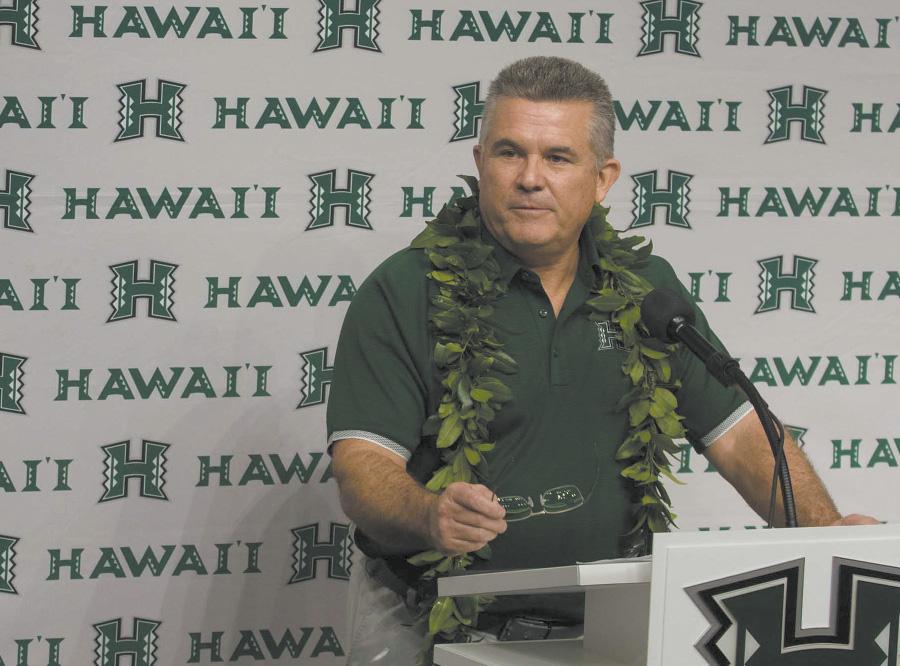

The Rainbow Warriors are looking to be two-time Big West champions this season. Hawai‘i was the unanimous preseason favorite in the BWC Coaches’ poll as the team received all six fi rst place votes. UH also earned the top spot in the preseason AVCA Top 15 poll.
Hawai‘i is looking to defend its Big West title after defeating Long Beach State last season. UH returns three All-Americans: senior opposite Rado Parapunov, junior libero Gage Worsley and senior middle blocker Patrick Gasman. Senior outside hitter Colton Cowell returns as well. 2020 marks the fourth time in program history that UH was picked as the nation’s topranked team. However, this year is the fi rst time that UH is the preseason poll favorite. This year UC Irvine hosts the Big West Tournament from April 23 to April 25.
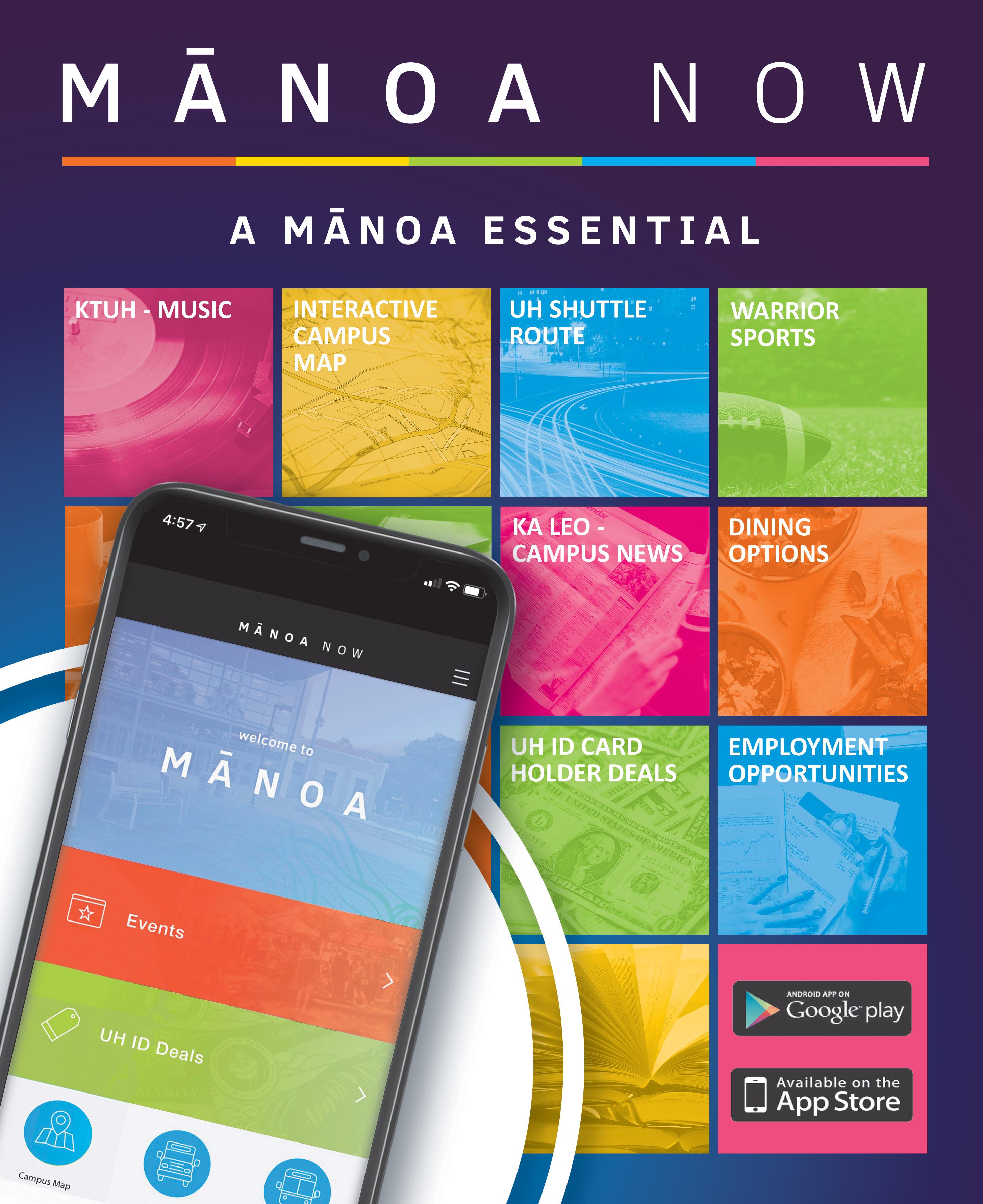
CAMPUS EVENTS
JANUARY 28–31
5:30PM – 9:00PM CCBAC: PAINTING IN PARADISE
BEGINS AT 7:00PM WOMEN’S BASKETBALL: VS. UC IRVINE
10:00AM – 2:00PM WORKSHOP: NORTH KOREA AS TRANSNATIONAL SPACE
FEBRUARY 01-10
12:00PM – 1:30PM
10:00AM – 2:00PM
7:30PM – 9:30PM THE JOY IN HEALING
SPRING 2020 STUDENT INVOLVEMENT FAIR
THE LAST KING OF BALI CAMPUS CENTER BALLROOM
STAN SHERIFF CENTER
THE CENTER FOR KOREAN STUDIES
QUEEN LILI‘UOKALANI CENTER #412
CAMPUS CENTER COURTYARD
KENNEDY THEATER
JOB LISTINGS
ON-CAMPUS

Administrative Assistant I
PART-TIME MĀNOA CAREER CENTER $10.60/hour Close Date: When filled Be part of a dynamic non-profi t organization that serves youth and college students. Work includes customer service, answering phones, data entry, assisting with volunteers and other administrative tasks. Programs range from community service projects, leadership development, and helping students transition to college.
UH Mānoa Federal Work Study Students Only. JOB NUMBER: 236959
OFF-CAMPUS

Entry Level Field/Office Engineer - Northwest District
FULL-TIME KIEWIT Salary: TBD Close Date: 2/7/20 or when filled We primarily perform heavy civil projects specializing in earth moving, transportation, roadways, water resources, and underground utilities. This position supports construction activities by planning, organizing and implementing the following functions: project controls system, engineering interface, subcontracts and materials management, purchasing and scheduling. This individual will also assist project management in expediting material deliveries, estimating and processing change orders, preparing monthly billings and preparing shop drawings. See job listing for more details.
OFF-CAMPUS

Sales Associate
PART-TIME QUIKSILVER $12.00/hour Close Date: 3/30/20 or when filled Quiksilver is looking for energetic people who have the need to serve, and desire to meet, people from around the world. As a member of our Ohana you will engage and build relationship with our guests to provide exceptional service in the largest Quiksilver store in the world. This position does not demand previous work experience; applicant should be a team player and contribute to the store success and display a “customer comes fi rst” attitude and deliver legendary customer service. See job listing for more details.
JOB NUMBER: 250197
INTERNSHIP

U.S. Pretrial Services Student Intern
U.S. COURTS Compensation: $15.27/hour Close Date: 04/10/2020 or when filled
Applicants for this position must be able to deal eff ectively with the Judges of the District Court, managers, coworkers and the public. If hired, this individual will perform receptionist duties by greeting visitors/clients in person or on the telephone and directing them to the appropriate individual, prepare and copy reports for offi cers and deliver to the judges’ chambers, and so on. Professional approach and attire are required. See job listing for more details.
